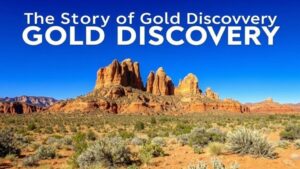Using GPS and Maps to Accurately Stake a Mining Claim
Using GPS and Maps to Accurately Stake a Mining Claim
Staking a mining claim is a critical step for individuals and companies wishing to explore and extract minerals from public lands. Accurate mapping and location technologies like Global Positioning System (GPS) have revolutionized this process, allowing stakeholders to define claim boundaries efficiently and precisely. This article explores how GPS and digital maps can be utilized effectively in staking a mining claim, while addressing best practices and potential challenges inherent in the process.
The Importance of Accurate Claim Staking
Accurate claim staking is fundamental to mining for various reasons, including:
- Legal Compliance: Mining claims must adhere to federal and state regulations which specify the required dimensions and legal descriptions of the claim.
- Resource Management: Correctly defining claim boundaries prevents disputes with neighboring claims, facilitating efficient resource management.
- Financial Investment: Mistakes in staking can lead to wasted financial resources and legal fees.
GPS as a Tool for Staking Claims
GPS technology has transformed the methodologies employed in staking mining claims. By enabling users to pinpoint exact geographical coordinates, GPS tools enhance accuracy. Here are a few key functionalities of GPS in this context:
- Geographical Coordinates: GPS provides latitude and longitude, enabling precise identification of claim corners.
- Data Recording: Modern GPS devices can store waypoints and tracks, allowing users to document claim boundaries accurately.
- Real-Time Mapping: Users can view their location in real-time against digital maps, helping them navigate complex terrains.
Integrating Maps with GPS Technology
While GPS technology provides coordinates, maps offer the context and visualization needed for effective claim staking. Digital maps, particularly topographical maps, are essential for highlighting important geographical features. Here’s how they work together:
- Topographical Reference: Maps contain elevation information which helps claim stakers understand the terrain, influencing where to place claims.
- Land Use Regulations: Maps showcasing zoning laws can indicate areas restricted from mining, preventing claims on sensitive lands.
- Overlay Applications: Tools such as Google Earth enable users to visualize their claims geographically, combining satellite imagery with GPS data.
Real-World Applications
Numerous mining operations have successfully leveraged GPS and maps for staking claims. One notable case involves a mineral exploration company operating in Nevada. They utilized advanced GPS mapping technologies paired with GIS (Geographic Information Systems). By integrating their GPS coordinates with GIS databases of mineral rights, they were able to accurately outline stake boundaries, minimizing conflict and ensuring compliance with legal requirements.
Challenges and Considerations
Despite the benefits, there are challenges associated with using GPS and maps for claiming mining land:
- Technical Limitations: GPS accuracy can be affected by environmental factors like foliage or mountainous areas, potentially leading to mistakes.
- Data Entry Errors: Manual input of GPS coordinates into mapping software increases the risk of human error.
- Legal Ambiguities: Different jurisdictions may have differing requirements for claim staking, necessitating a thorough understanding of local laws.
Actionable Takeaways
For individuals or companies looking to stake a mining claim successfully, consider the following steps:
- Invest in reliable GPS technology and keep it updated.
- Use accurate, recent mapping services to supplement GPS data.
- Document all staking activities, ensuring you maintain proper records to address potential disputes.
- Stay informed about local legal requirements surrounding mining claims.
To wrap up, utilizing GPS alongside digital maps enhances the accuracy and reliability of staking mining claims. By understanding both the power of technology and the complexities of regulatory landscapes, miners can navigate the claim process efficiently, protecting their investments and adhering to legal standards.

